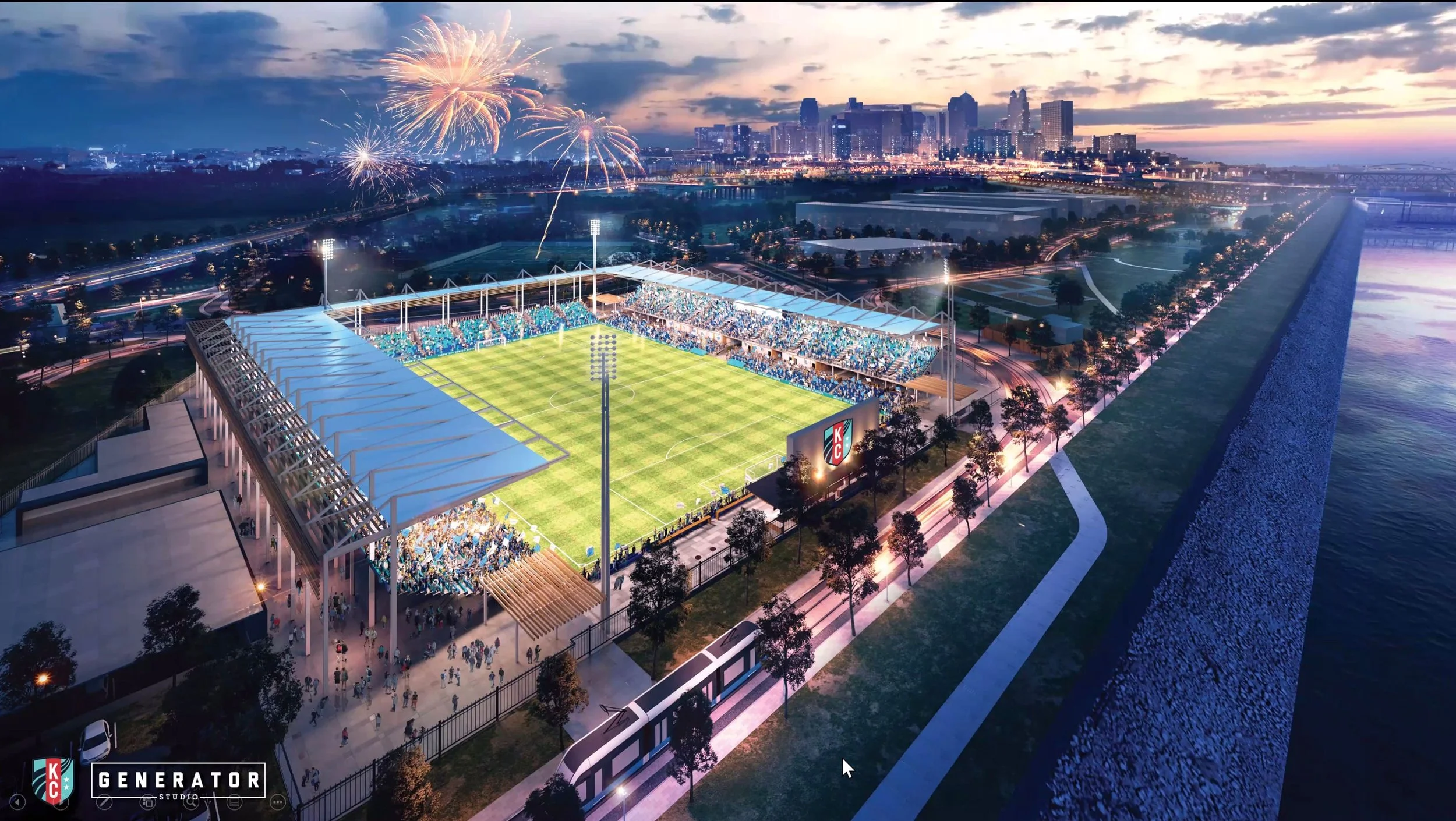Port KC and other community leaders are bringing the Kansas City Current women’s soccer stadium to Berkley Riverfront with important roles for streetcar service and ambitious future development, according to presenters of the KC Downtowners virtual luncheon on November 10.
“Our focus is to grow the (KC) economy and create opportunities for all,” said Jon Stephens, president & CEO of Port KC.
The stadium project reflects Kansas City’s history of being “born on the Riverfront,” Stephens said. “Reclaiming and revitalizing the Riverfront is at the core of what we do.”
“We couldn’t think of any location as important to history or as visible as the Riverfront,” said Tom Proebstle, AIA, founding partner and design director at the Generator Studio, the architect firm behind the stadium.
The seven-acre site (the equivalent of four city blocks) will have a 250,000-SF gross area; pitch of 75 x 115 yards (meeting FIFA specifications); 40,000-SF building footprint; 11,000 seats; 360-degree concourse; and four locker rooms.
Partners to date include JE Dunn Construction, Monarch Build, Taliaferro & Browne and Henderson Engineers. The stadium is expected to host its first events in the fall of 2023 and the team should take the pitch in 2024.
Plans for the surrounding area include a 410-unit Union-Berkley apartment building and 350 more units with affordable housing — the first residences to be built on the Riverfront in more than 100 years. Several parcels are on the fast track for development.
“The area will be an extension of downtown, and will be unique, inclusive and diverse,” Stephens said. “It represents our belief that the Riverfront should be a catalyst. The KC Current team has said the Riverfront is the future as a global model for women’s sports and sports in general.”
The model will also demonstrate how downtown can be connected to the Riverfront.
The site will be streetcar-accessible and a “dynamic walkable and bikeable area,” with a center for education and justice, a bike-pedestrian facility, and more.
“It can’t only be [in use] when the team is playing,” Stephens said. “We want it to be something the fans and city can be proud of, where people can gather even when it’s not a match day.”
The stadium will be designed for parking to be flexible rather than a “sea of parking.” There will be more than 2,000 spaces when it opens, and all will be multi-use.
The team is making “a major investment” in training at $15 million for a multi-field and multi-concept project, Proebstle said. “It won’t just be a soccer stadium” — city and state high school championships, music/concerts, college events, and more are among the expected uses.
The building will be U-shaped, with a cover at one end to protect fans from rain or heat. The developers looked to Europe for the roof, which is an “iconic element of the design and an important investment for the ‘blimp’ (aerial) shot,” Proebstle said. A “massive” area at the open end under the scoreboard allows for expansion in the future. There will be major sponsorship opportunities for naming rights and “significant branding” at each corner.
The building will a vital aspect of the city’s World Cup bid in the future.
The site is in a biophilic area and the team is adding indigenous trees that will be integrated with the green part of the Riverfront.
“This is uniquely KC,” Proebstle said. “The owners are committed to elements that define Kansas City.”
Sustainability and solar power are part of the ongoing discussions as the project evolves, including the possibility of floating barges for hydropower.
Contractors can go to the PortKC website or kansascitycurrent.com for information about opportunities to be involved in the stadium project.
——————————————————————————
The KC Current event began with a presentation from Brent Lager, founder and CEO of Uncover KC (www.uncoverkc.org), as part of the Downtowners’ commitment to partnering with area nonprofits. The organization aims to “create positive social impact through civic engagement services and programs that connect people and spark action, according to its website. The key to getting people involved in nonprofit projects is three-fold, Lager said: “Recruitment, Recognition and Retention.” The organization succeeds in attracting volunteers by making it easy to get involved.
Volunteering has a “multiplier effect”: “If you can lead others to make change, it’s as effective as any action of your own,” Lager said.

